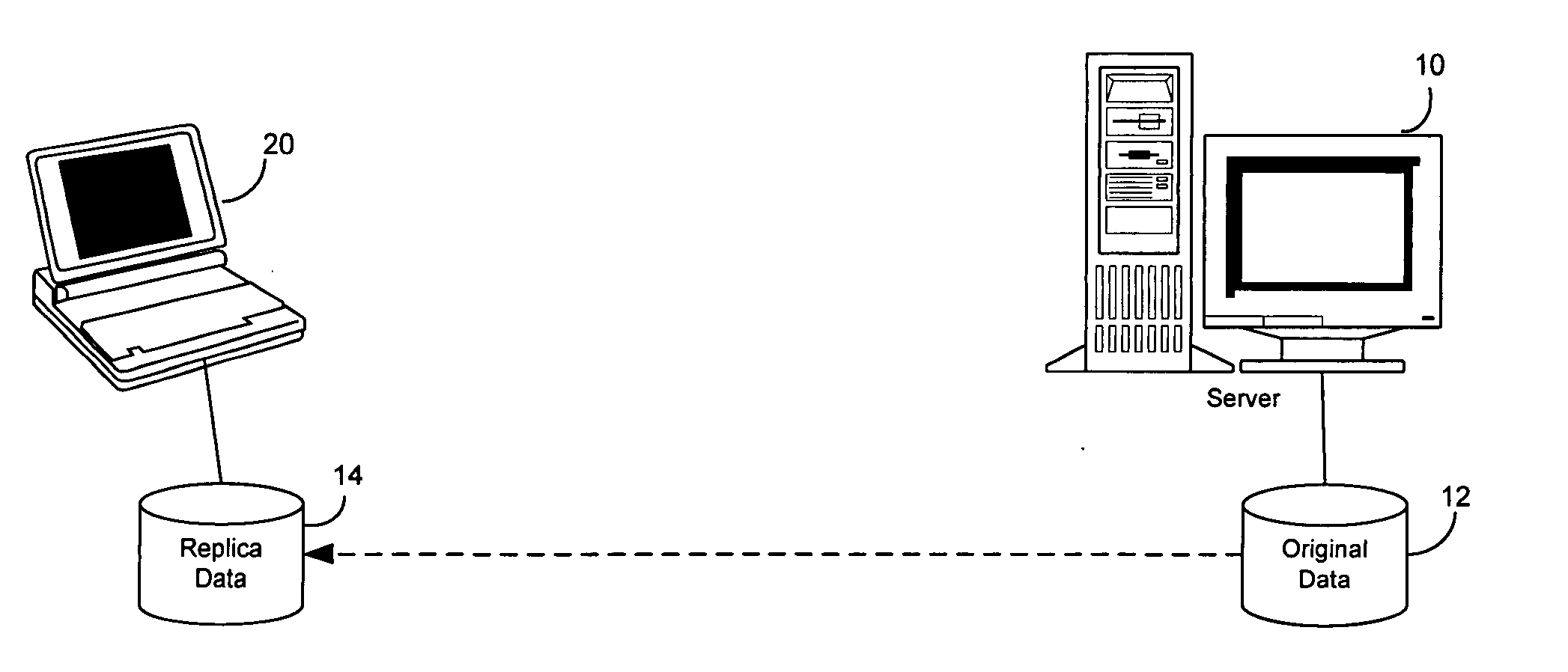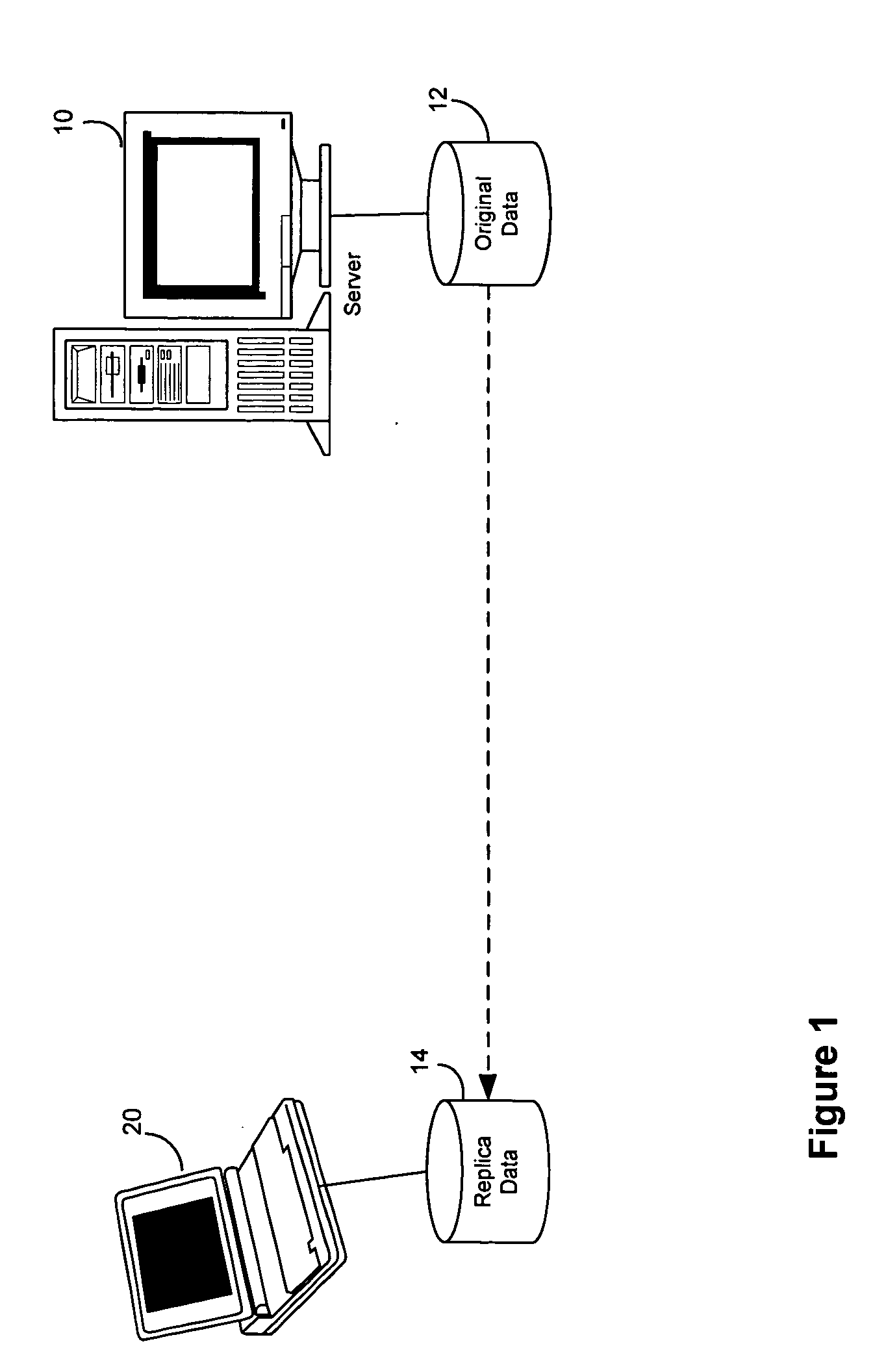System and method for replicating data in a distributed system
a distributed system and database technology, applied in the field of computing, can solve the problems of unacceptably stale data, unfavorable data synchronization, and high cost of communication channels, and achieve the effect of low change ra
- Summary
- Abstract
- Description
- Claims
- Application Information
AI Technical Summary
Benefits of technology
Problems solved by technology
Method used
Image
Examples
example
Mobile Email Client
[0063] A second example of functionality of the system is with mobile email clients. In such systems, a central server is used to store email, and the mobile email client running on a mobile device synchronizes with the central email server. The mobile email client is similar to the mobile news database, and uses the probabilistic models to indicate to the user the likely divergence between the email cached on the mobile device and the central server, and to control when synchronization events should occur. These are calculated using a similar cost function to that used in the News Database example.
[0064] The system logs when email arrived (email folders updated). In this example, the system logged e-mail arrival for six Microsoft Exchange users over a predetermined time period, by using information held in the Exchange server. The probabilistic models were created automatically, with the system calculating the periodicity of the data being modeled. For the six...
PUM
 Login to View More
Login to View More Abstract
Description
Claims
Application Information
 Login to View More
Login to View More - R&D
- Intellectual Property
- Life Sciences
- Materials
- Tech Scout
- Unparalleled Data Quality
- Higher Quality Content
- 60% Fewer Hallucinations
Browse by: Latest US Patents, China's latest patents, Technical Efficacy Thesaurus, Application Domain, Technology Topic, Popular Technical Reports.
© 2025 PatSnap. All rights reserved.Legal|Privacy policy|Modern Slavery Act Transparency Statement|Sitemap|About US| Contact US: help@patsnap.com



